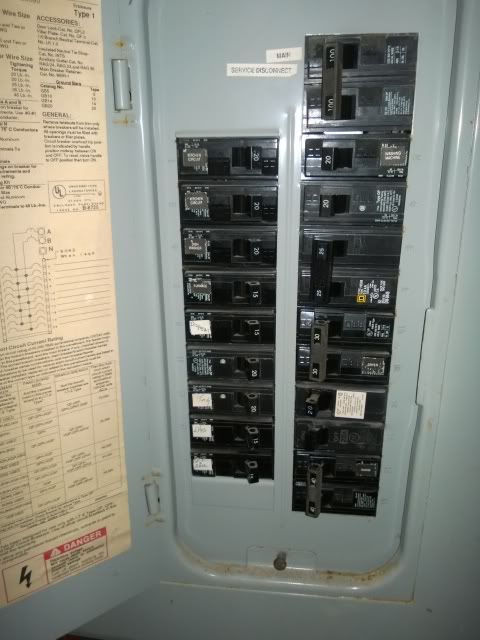This ultimately gets to my question, I promise!
The previous owners of my house retrofitted A/C to the forced-air system. The installer yanked out the double breaker for the then-unused dryer circuit to run the A/C circuit. They left the bare ends from the dryer circuit hanging in the electrical panel (which chaps my behind, but that's another issue), but left the 30-amp dryer breaker on top of the box. Of course our dryer is electric. So we've been without an operating dryer for a few weeks. Not a big deal, but still a hassle.
Fast-forward to today, when the previous owner (nice guy, very helpful!) stopped by on an unrelated matter. I asked about the dryer circuit, and was told that the breaker was yanked for the A/C since their dryer was gas. They didn't know if the circuit worked, but they hadn't touched it or had any work done around it besides removing the breaker while they owned the house.
Armed with that information, I flipped off the main breaker (100 amp service), verified the panel was dead, and re-installed the dryer breaker since there was still room in the panel. A few other breakers (including the 40 amp electric stove breaker) needed to be moved around to match up with existing wire lengths. Every moved wire was secured into its breaker, and no wires popped loose when I yanked on them. No loose ends were left in the panel. I tested the breakers I moved, and got 120 volts at each terminal when testing terminal to ground. The dryer and stove work fine, at least when briefly testing them.
I think I did everything right. Anything I should be on the lookout for?
The previous owners of my house retrofitted A/C to the forced-air system. The installer yanked out the double breaker for the then-unused dryer circuit to run the A/C circuit. They left the bare ends from the dryer circuit hanging in the electrical panel (which chaps my behind, but that's another issue), but left the 30-amp dryer breaker on top of the box. Of course our dryer is electric. So we've been without an operating dryer for a few weeks. Not a big deal, but still a hassle.
Fast-forward to today, when the previous owner (nice guy, very helpful!) stopped by on an unrelated matter. I asked about the dryer circuit, and was told that the breaker was yanked for the A/C since their dryer was gas. They didn't know if the circuit worked, but they hadn't touched it or had any work done around it besides removing the breaker while they owned the house.
Armed with that information, I flipped off the main breaker (100 amp service), verified the panel was dead, and re-installed the dryer breaker since there was still room in the panel. A few other breakers (including the 40 amp electric stove breaker) needed to be moved around to match up with existing wire lengths. Every moved wire was secured into its breaker, and no wires popped loose when I yanked on them. No loose ends were left in the panel. I tested the breakers I moved, and got 120 volts at each terminal when testing terminal to ground. The dryer and stove work fine, at least when briefly testing them.
I think I did everything right. Anything I should be on the lookout for?


